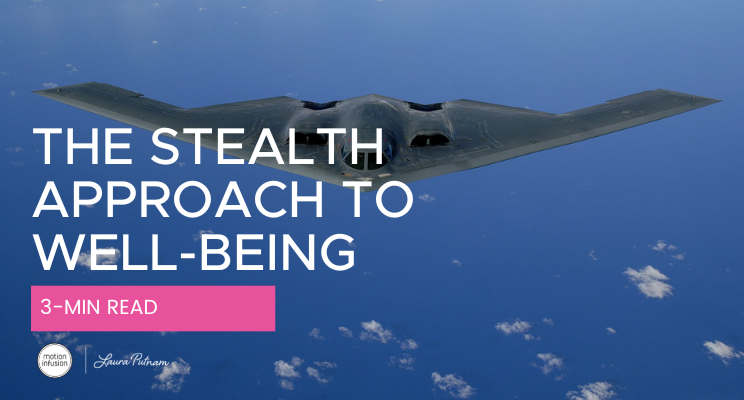|
Shortly after delivering a training workshop, I received an email from one of the attendees (let’s call her “Anna”): “I am looking for some of the studies that have been done on the correlation between happiness and wellness. I am presenting to our “C Suite” on Monday and wanted something to reference. “ I shared a few resources and followed up a couple of weeks later to see how it went. And, here’s what she said: “Despite my efforts to come prepared with data, studies and big ideas, my presentation wasn’t well received. My “C Suite” was more worried about the bottom line than any impact we might be able to make. So, back to the drawing board. It was the most frustrating Monday meeting I’ve had in a while and honestly, took the wind out of my sails.” I think that we have all felt like Anna. We’ve had the wind knocked out of our sails by disbelievers and naysayers. If you’re like most, you’ve got a wellness program that is under-funded, under-supported and under-enrolled. Let’s face it: Most eligible employees are simply opting out and most leaders aren’t supporting well-being to the extent that they could be. No wonder why anyone tasked with workplace well-being can feel like Sisyphus pushing a rock up a hill. Fortunately, there is a better way. That is, you can simply sneak wellness into non-wellness initiatives, and call it something else. It’s what you might call enacting a “Trojan Horse,” bringing well-being under the guise of something else – something else that is more “important.” And, going stealth, I’m convinced, can be a secret weapon for building your movement of well-being. While we know that the business case for better health and well-being is sound, workplace wellness is dwarfed by other initiatives like leadership development, safety training, onboarding or even team building. The good news is that each of these initiatives effectively represents a “stealth” opportunity. The idea here is that in lieu of trying to lure employees and leaders to take part in stand-alone wellness programs, you simply bake well-being into other non-wellness programs. Even your everyday staff meeting represents a stealth opportunity. At Eileen Fisher, for example, every meeting kicks off with a moment of silence. Get it? Instead of having a stand-alone mindfulness program, just integrate a little bit of mindfulness at the beginning of every meeting. The reality is that most people and most leaders are simply not motivated by health. This is why researchers at Stanford conclude that applying a “stealth intervention” may be more effective than the traditional “do this because it’s good for you” approach. In a small study, they compared two groups of students to better understand what motivates people to make dietary changes. The first group of students were enrolled in a traditional nutrition course. Here the focus of food (and reason for making dietary changes) was for health reasons. The second group of students enrolled in a “Food and Society” course, which focused on the policy and environmental aspects of food. Which students made more positive changes in their diet? The students enrolled in the “Food and Society” course. At the end of the course, these students were eating more vegetables and fewer high-fat dairy products, high-fat meats and sweets, compared with students enrolled in the more traditional nutrition course. Upshot, as explained by senior author Thomas Robinson, MD, MPH, professor of pediatrics and of medicine at the School of Medicine and director of the Center for Healthy Weight at Lucile Packard Children’s Hospital: “When people get involved in social movements, it changes their behavior more dramatically than what we’ve seen with more cognitive-based approaches.” Again – back to our theme of starting and building a MOVEMENT – instead of yet another program. Or, in other words, go where the money is…and, refill your sails. CHECK OUT MY LIVE CONVERSATION WITH JULIE SHIPLEY ON THE POWER OF GOING STEALTH!
0 Comments
Leave a Reply. |
Follow laura on social:Website by Brand Genie
|
join laura's monthly newsletter
|





